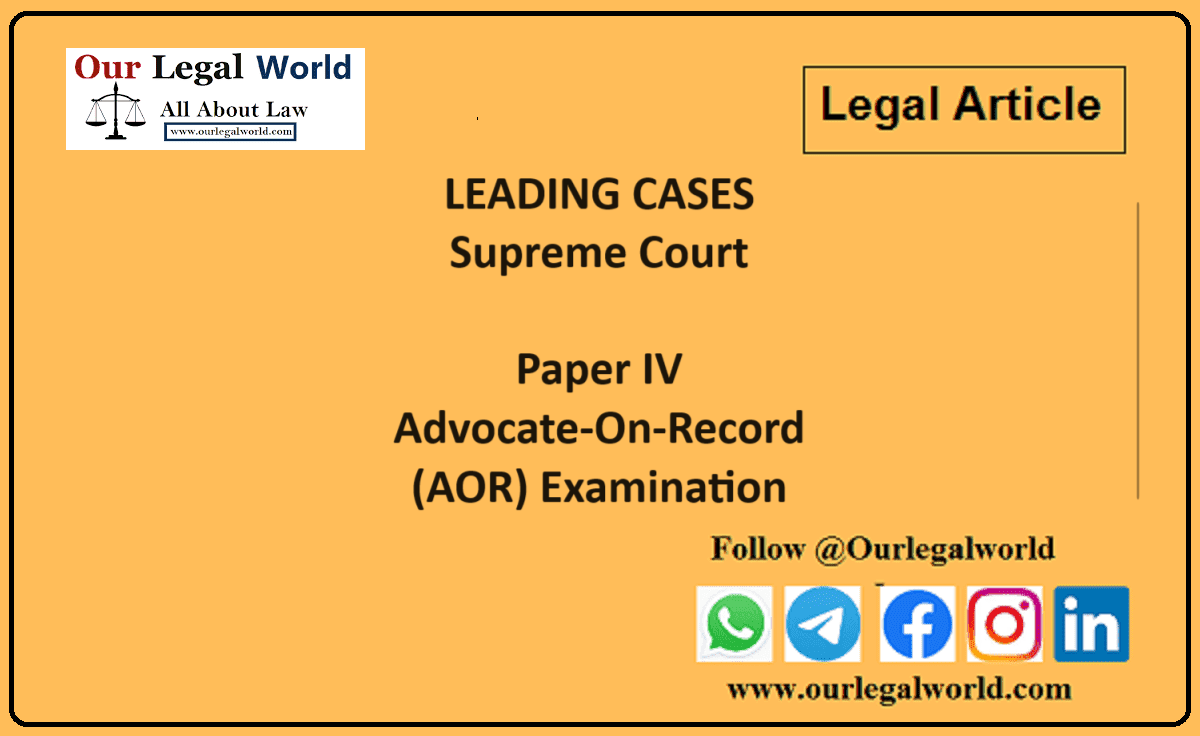An Overview of Dacoity under the Indian Penal Code
Introduction
Section 391 of Indian Penal Code defines Dacoity. There is no difference between robbery and dacoity the gravity of the offence consists in the terror it caused by the presence of a number of offenders. Dacoity is perhaps the only offence which the legislature has made punishable at four stages that is when 5 or more persons assemble for the purpose of committing a dacoity, each of them is punishable under section 402 merely on the grounds of joining the assembly. Another stage is preparation to commit a dacoity, the person is punishable under section 399. The third stage is the stage of attempting to commit and lastly the stage of the actual commission of a robbery. Thus attempt to commit dacoity is also dacoity.
Conjointly
It refers to united of concerted action of the persons participating the transaction. It is only when their individual action can be properly referred to their concerted action that the question of conviction under this section can arise. Fear of instant death or of hurt, or of wrongful restraint- imminent fear of death hurt etc. will be sufficient to bring the section into operation.
In the case of Re Muppanna Appanna, AIR 1948 Mad 96, there was a group of five people, attacked the family members who were sleeping outside their house. One accused broke open the door of the victim’s house. Three of them stood outside guarding and two entered the house for a robbery. All of them helped to remove the boxes out of the victim’s house and two of them left with the boxes. The court held that causing hurt and robbery was all part of dacoity. As all of them aided, assisted each other and participated conjointly in the offence, it makes everyone liable. Thus, they were held guilty under sections 391 and 395 of IPC.
Also Read: Latin maxims and terms associated with the IPC (Indian Penal Code)
Dacoity:
When five or more persons conjointly commit or attempt to commit a robbery, or where the whole number of persons conjoint committing or attempting to commit a robbery, and persons present and aiding such commission or attempt, amount to five or more, every person so committing, attempting or aiding, is said to commit “dacoity”.
Essentials Ingredients of Dacoity:
- The accused commit or attempt to commit robbery;
- Persons committing or attempting to commit robbery and person present and aiding must not be less than 5;
- All such person should act conjointly. (Om Prakash v. State,AIR 1956 All 163)
The word conjointly refers to the united or concerted action of 5 or more persons participating in the act of committing the offence. In other words, 5 or more persons should be concerned in the commission of the offence and they should commit or attempt to commit robbery.
Punishment for Dacoity:
The Section 395 provided the punishment for dacoity is imprisonment for life or with rigorous imprisonment for a term may extend to ten years.
Dacoity with murder:
According to Section 396 of the Indian Penal Code, If any one of five or more persons, who are conjointly committing dacoity, commits murder in so committing dacoity, every one of those persons shall be punished with death, or imprisonment for life, or rigorous imprisonment for a term which may extend to ten years, and shall also be liable to fine. Section 396 of the Code fixes joint liability on all the persons causing murder who conjointly commit dacoity.
Ingredients
To invoke Section 396 of the Indian Penal Code, following conditions must be satisfied.
(1) Dacoity was committed
(2) Five or more persons conjointly committed dacoity
(3) One or more of them Committed Murder
(4) The murder was committed during the commission of Dacoity.
Robbery or dacoity, with attempt to cause death or grievous hurt:
Section 397 of the Indian Penal Code says that, If, at the time of committing robbery or dacoity, the offender uses any deadly weapon, or causes grievous hurt to any person, so attempts to cause death or grievous hurt to any person, the imprisonment with which such offender shall be punished shall not be less than seven years.
Ingredients :
- (1) Robbery or Dacoity was committed;
- (2) The accused used deadly weapons or caused grievous hurt or attempted to cause death;
- (3) During Commission of Robbery or Dacoity such weapons was used.
The offence under Section 397 of The Indian Penal Code, 1860 is cognizable, non-bailable, non-compoundable and triable by Court of Session.
Attempt to commit robbery or dacoity when armed with deadly weapon :
Section 398 of the Indian Penal Code says that If, at the time of attempting to commit robbery or dacoity, the offender is armed with any deadly weapon, the imprisonment with which such offender shall be punished shall not be less than seven years.
The offence under Section 398 of The Indian Penal Code, 1860 is cognizable, non-bailable, non-compoundable and triable by Court of Session.
Making preparation to commit dacoity:
The Section 399 provided the punishment for preparation to commit dacoity is rigorous imprisonment for a term may extend to ten years or fine.
Ingredients
(1) The act of accused person amounted preparation;
(2) The presence of five or more persons making preparation
(3) The preparation was to commit robbery
Punishment for belonging to gang of dacoits :
Section 400 of the Indian Penal Code says that whoever, at any time after the passing of this Act, shall belong to a gang of persons associated for the purpose of habitually committing dacoity, shall be punished with imprisonment for life, or with rigorous imprisonment for a term which may extend to ten years, and shall also be liable to fine.
Ingredients :
To invoke Section 400 of the Indian Penal Code, following conditions must be satisfied.
(1) There is existence of a gang of dacoits;
(2) The Accused belong to that gang; and
(3) The members of the gang were associated for the purpose of committing dacoity.
The offence under Section 400 of The Indian Penal Code, 1860 is cognizable, non-bailable, non-compoundable and triable by Court of Session.
Punishment for belonging to gang of thieves.
According to Section 401 of the Code whoever, at any time after the passing of this Act, shall belong to any wandering or other gang of persons associated for the purpose of habitually committing theft or robbery, and not being a gang of thugs or dacoits, shall be punished with rigorous imprisonment for a term which may extend to seven years, and shall also be liable to fine.
Ingredients :
Following ingredients must be established under this Section –
(1) Persons were associated for the purpose of committing theft or Robbery.
(2) There was a gang of persons
(3) Their object was to commit theft or robbery habitability
(4) That the accused Joined that group.
Assembling for purpose of committing dacoity (Section 402):
Whoever, at any time after the passing of this Act, shall be one of five or more persons assembled for the purpose of committing dacoity, shall be punished with rigorous imprisonment for a term which may extend to seven years, and shall also be liable to fine.
Ingredients :
To bring an action under Section 402 of the code following facts must be proved.
(1) Five or more persons are assembled;
(2) That the persons are assembled for committing dacoity
(3) That the accused was one of the five or more persons assembled








![Tax Law Internship at Legum Attorney [Chamber of Ashish Panday], Delhi : Apply by 15th May 2025](https://www.ourlegalworld.com/wp-content/uploads/2025/05/IMG_0113-min.png)
